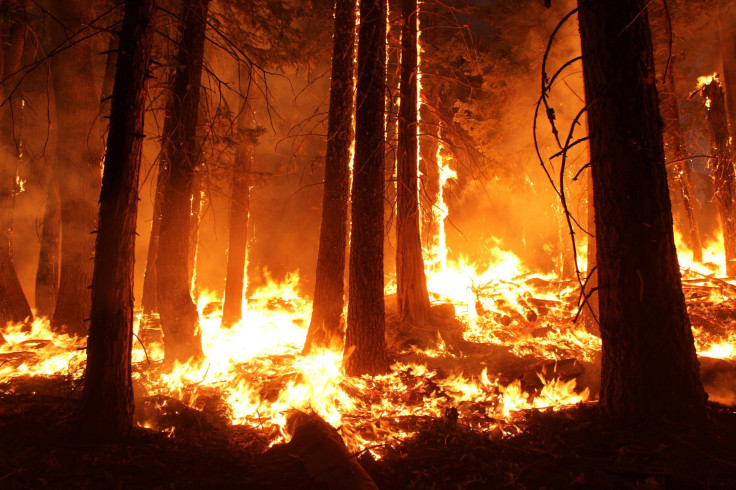Rim Fire Near Yosemite National Park Contained 70 Percent; Are Marijuana Growers To Be Blamed For Rim Fire?

The Rim Fire, which started on Aug. 17 near Yosemite National Park, has been contained 70 percent and the weather forecast for northern California, which include rains and cooler temperatures, is expected to help firefighters control the blaze even further, reports said.
But, full containment of the fire, which has so far charred 235,841 acres, or 368 square miles, and is said to be California's fourth-largest wildfire in history, is not expected until Sept. 20, NBC Bay Area cited Cal Fire spokesman, Daniel Berlant, as saying.
The fire is suspected to be human-caused, and according to Todd McNeal, a fire chief in the town of Twain Harte near the park, marijuana growers could be blamed for the blaze. McNeal made these comments at an Aug. 23 community meeting and the video of the meeting was uploaded on YouTube.
“It started down in the brush. We know it is human caused, there’s no lightning in the area. Highly suspect it might have been some illicit grove, marijuana grove type thing.” McNeal is heard saying in the video.
But, at this point, the marijuana theory is just a possibility, the U.S. Forest Service told CBS Sacramento, adding that it is not yet sure when the findings of the investigation as to what caused the fire would be released.
According to the San Francisco Chronicle, the fire is expected to affect the cattle industry in the region, as many cows that grazed on the Stanislaus National Forest land are believed to be displaced, injured or dead.
According to data available from the California Department of Food and Agriculture, the state accounts for 7.4 percent of national revenues from livestock and livestock products.
Twelve of the 36 grazing grounds in the forest have been affected, and herds of cattle are scattered across the region, according to the Chronicle.
"They (ranch workers) go out every day, gathering the cows they can find, the ones that have made it into the green areas," Susan Forbes, a national forest staffer, told the Chronicle. "They're finding pockets of livestock and concentrating on removing them as fast as they can."
© Copyright IBTimes 2024. All rights reserved.




















